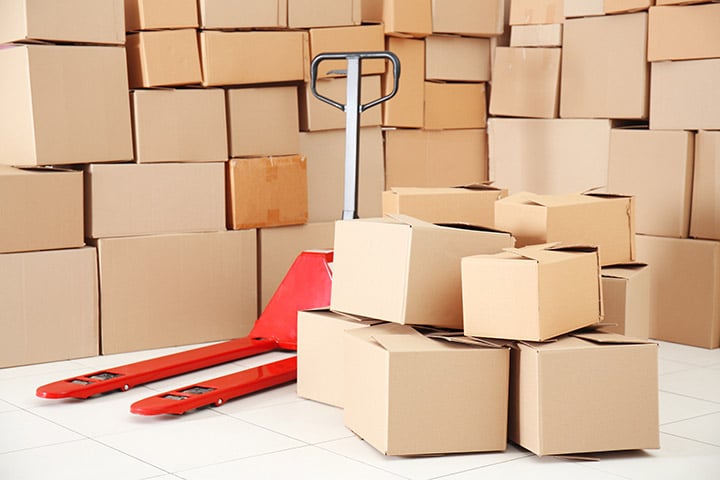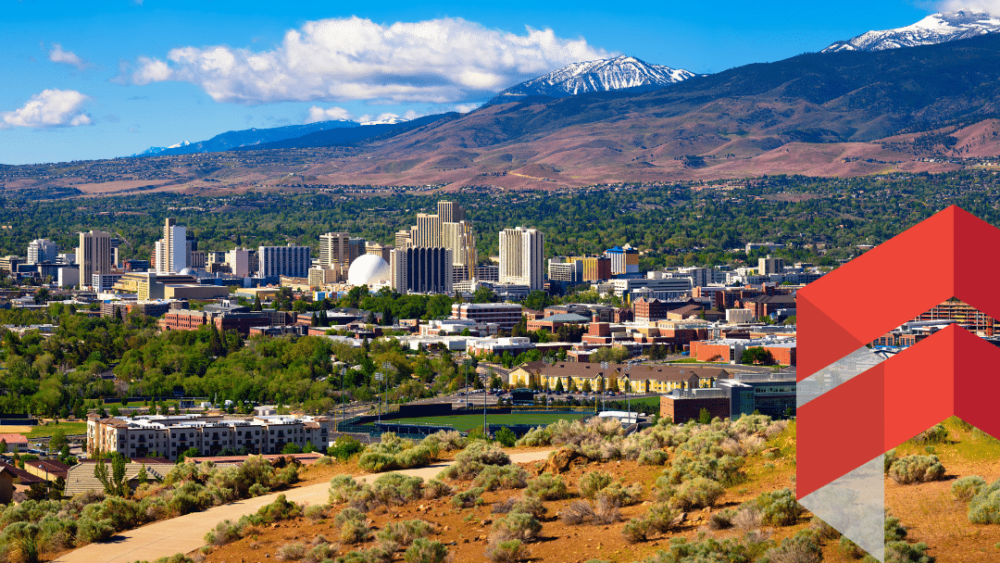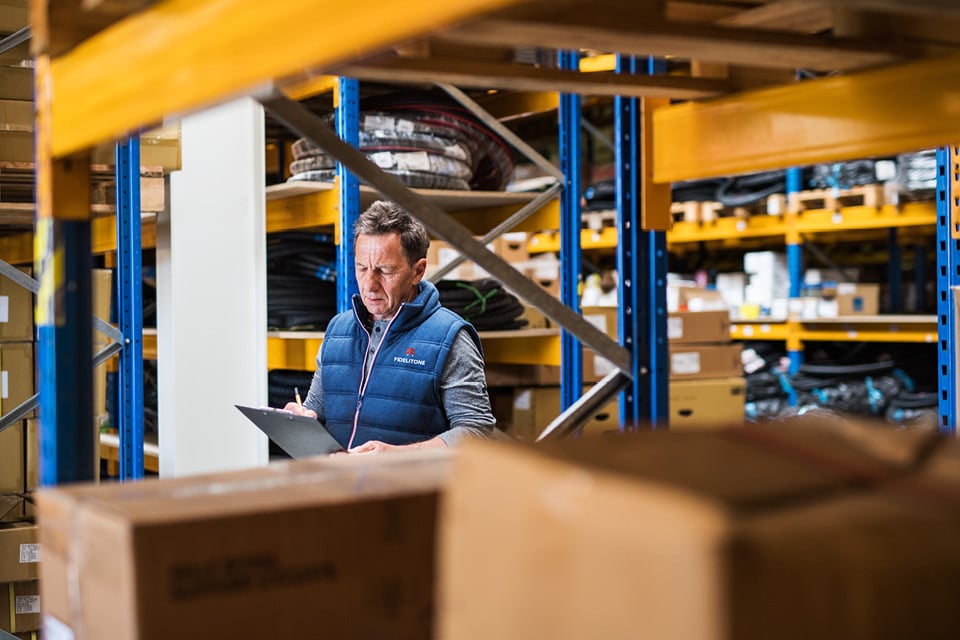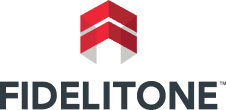Is Your Supply Chain Ready for a Growth Economy?

With consumers increasingly expecting their shopping experiences to be more “on demand” than ever before, operational complications have become a reality for most retailers and product manufacturers today. From cross-channel strategies wreaking havoc on inventory visibility, to delivery driver and warehouse worker shortages, to rising real estate costs and competition for available space in key markets, you could say that the supply chain is under assault.
Things move fast in today’s omnichannel world. If expectations for economic growth ring true, the engine of commerce is likely to accelerate. Expect your e-commerce fulfillment business to be impacted. Are you prepared for what could come in terms of meeting growing consumer demand?
Stay on Top of Execution
As supply chain management experts with an 90-year track record, we’ve seen markets grow and retreat, industries rise and fall and challenges come and go. Clients who have been with us for decades have experienced their share of supply chain challenges, and we have helped them manage through them.
The business analysts here at FIDELITONE offer the following insights to help you stay on top of your customer experience should economic growth begin to roar.
What You Can Do Today
Are you tracking your labor and fulfillment costs?
If you’re focused on controlling costs and keeping your cost of doing business low, you likely have a handle on what you’re spending on your warehouse labor and fulfillment activities — in every market. If you don’t, you need to start tracking these expenses. Fulfillment is a cost center. Don’t let these costs get away from you and eat you alive.
Logistics firms like FIDELITONE monitor these costs on a regular basis; the data we collect and review helps us drive better decision making in terms of investments or adjustments we may need to make to better service our clients and their customers.
Online shopping is impacting everything, including the decisions you make/will need to make around warehouse space and employees who pick, pack and ship orders. If volume rises, it stands to reason you’ll need more help (and/or more automation technologies).
According to a recent article in the Wall Street Journal, entitled “Online Retailers’ New Warehouses Heat Up Local Markets” (Jennifer Smith, April 9, 2017), research cited from the CBRE Group revealed that two to three times the amount of workers are required to staff an e-commerce fulfillment center.
Competition for warehouse/fulfillment workers and delivery drivers is on the rise; when there are worker shortages, wages tend to climb as well as the incentives that are offered to attract and keep them.
By keeping track of your labor and fulfillment costs, you can stay on top of changes or trends and make more informed decisions when and where adjustments are needed.
Keep your eye on productivity
When it comes to measuring labor force performance, your focus should be on productivity. To improve efficiency and gain better insights into your labor and fulfillment costs, you should analyze productivity metrics daily. Sample metrics include units picked, lines picked and units packed per minute or hour.
Share performance metrics
Do you have a process in place for managing labor costs, to help you effectively measure performance? We think it’s a “must have” today. Sharing performance metrics across the organization is also a great way to gain some improvement.
Don’t forget the equipment
Do you have the right — and right amount of — material handling equipment (MHE) needed to support significant order volume growth due to increasing consumer demand? This includes pallet racking systems, forklifts, hand trucks and picking systems.
What about spikes in volumes? Investing in the right type of MHE to deliver the results you need and keep up with the growth, we believe, is crucial for high-performing environments. Not only will the right MHE deliver on your service level goals, but also the right equipment can help you drive down labor costs.
Buy or lease more space … or borrow it?
The driving force for adding space today is to be in closer proximity to customers. Do your challenges have to do with having a local presence, the ability to scale or rising operating costs?
If you’re thinking of investing in warehouse space, you might want to consider whether leveraging existing space from a logistics partner makes better sense. According to leading global real estate consulting firm JLL, e-commerce fulfillment is driving industrial real estate demand today and, as a result, it is causing shortages around the country. What is best for you? Will investments in hard assets like real estate (whose value may be rising), or long-term leases that can be costly to break, be the best place for your money?
Flexibility as Plan B
As consumer demand goes up and down, the ability to scale your operation should follow. Just as you focus for growth, also make decisions based on anticipating changes in demand. For example, you wouldn’t want to be stuck with an empty building on a multi-year lease if demand drops.
Do you even need the space you are in today? Perhaps you can save a significant amount of money by re-evaluating some of your supply chain methodologies. For example, choosing a partner to manage a drop ship program can be a great way to reduce your expenses. Combine having to hold less inventory with a flexible storage option, and you could save a lot more than you thought was possible.
Whether you choose to do it all yourself or seek a partner — or partners — to help you respond more efficiently, the customer experience should always be the end goal. Measure against what you do for them. Are your orders being shipped on time? Were they completed? Are you achieving same day shipping? This is information you should know and act upon.
Let us help! Contact us online today to speak with one of our supply chain experts to ensure your operations is ready for a growth economy.
FIDELITONE helps you earn customers’ loyalty through specialized services in inbound logistics, order fulfillment, last mile delivery and service parts management.
Recent Posts
-

How to Choose a Global Ecommerce Fulfillment Partner
In today’s interconnected global economy, international trade is no longer a maybe, but for most…
-

Elevating Your Supply Chain: FIDELITONE’s Latest Facility Openings in Raleigh, Virginia Beach, and Reno
FIDELITONE is thrilled to announce the launch of three advanced facilities strategically positioned in Raleigh,…
-

How to Reduce Warehouse Costs in a Down Market
Order volumes have slowed down while excess warehouse capacity inches upward. How do you manage…
Are you interested in order fulfillment or last mile delivery services? Consult with a FIDELITONE expert to discuss how we can help.
